Peugeot 308 vs SsangYong Tivoli – Differences & prices compared
Compare performance, boot space, consumption and price in one view.
Find out now: which car is the better choice for you – Peugeot 308 or SsangYong Tivoli?
The Peugeot 308 (Hatchback) comes with a Diesel, Electric or Petrol MHEV engine and Automatic transmission. In comparison, the SsangYong Tivoli (SUV) features a Petrol engine with Manuel or Automatic transmission.
When it comes to boot capacity, the Peugeot 308 offers 412 L, while the SsangYong Tivoli provides 720 L – depending on how much space you need. If you’re looking for more power, decide whether the 156 HP of the Peugeot 308 or the 163 HP of the SsangYong Tivoli suits your needs better.
In terms of consumption, the values are 15.20 kWh5 L per 100 km for the Peugeot 308, and 7 L for the SsangYong Tivoli.
Price-wise, the Peugeot 308 starts at 28600 £, while the SsangYong Tivoli is available from 21400 £. Compare all the details and find out which model fits your lifestyle best!
Peugeot 308
The Peugeot 308 presents a refined blend of style and sophistication, making it a compelling option for anyone in search of a dynamic yet practical vehicle. Its sleek design is complemented by a thoughtfully crafted interior that ensures both driver and passengers travel in comfort and elegance. Moreover, the 308 offers a responsive driving experience, combining agility with a sense of security on the road.
details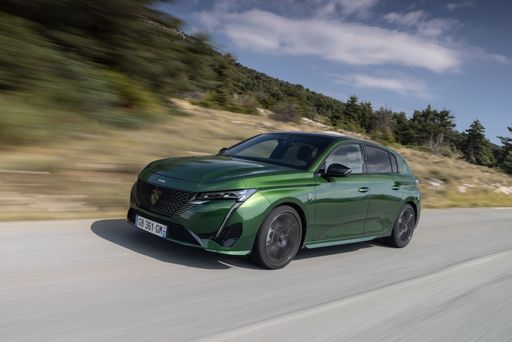 @ media.stellantis.com
@ media.stellantis.com
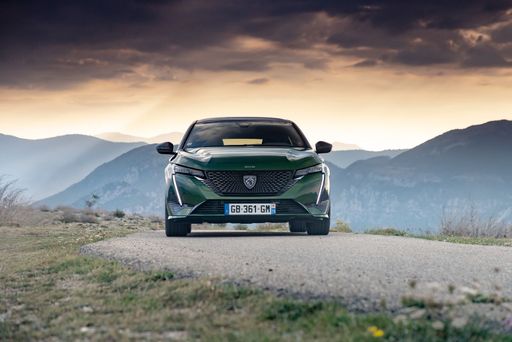 @ media.stellantis.com
@ media.stellantis.com
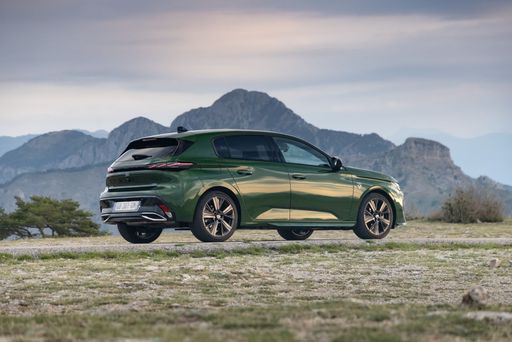 @ media.stellantis.com
@ media.stellantis.com
 @ media.stellantis.com
@ media.stellantis.com
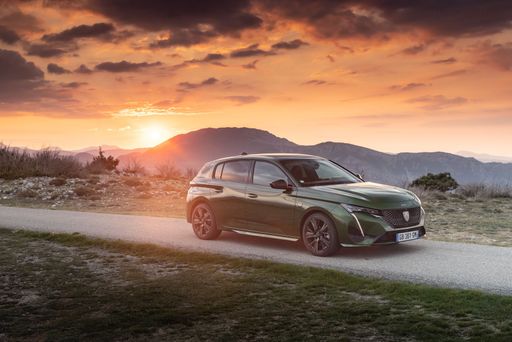 @ media.stellantis.com
@ media.stellantis.com
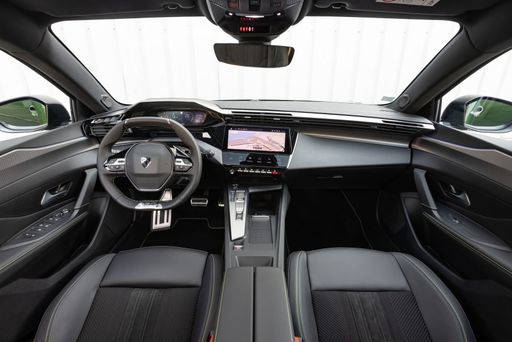 @ media.stellantis.com
@ media.stellantis.com
SsangYong Tivoli
The SsangYong Tivoli is a compact SUV that seamlessly blends style with practicality, making it an appealing choice for urban drivers. Its sleek design is complemented by a well-crafted interior, offering a comfortable and spacious experience for passengers. With its reliable performance and modern features, the Tivoli stands out as a versatile option in the competitive compact SUV market.
details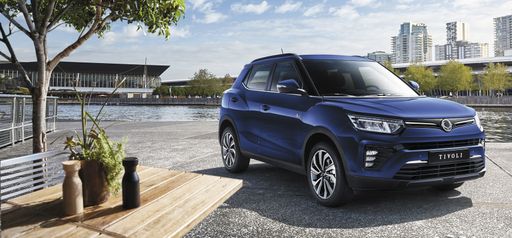 @ Ssangyong
@ Ssangyong
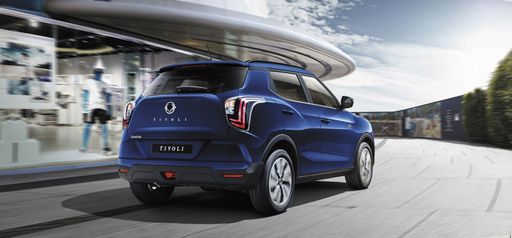 @ Ssangyong
@ Ssangyong
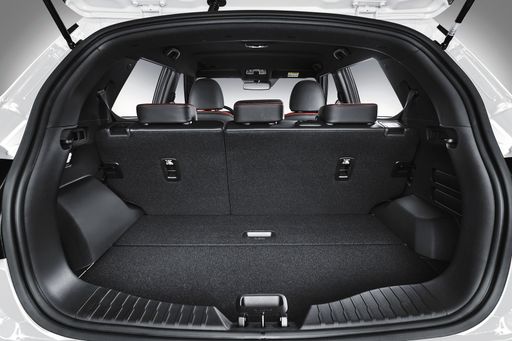 @ Ssangyong
@ Ssangyong

|

|
|
|
|
Costs and Consumption |
|
|---|---|
|
Price
28600 - 41700 £
|
Price
21400 - 30300 £
|
|
Consumption L/100km
5 - 5.1 L
|
Consumption L/100km
7 - 8.3 L
|
|
Consumption kWh/100km
15.2 - 15.6 kWh
|
Consumption kWh/100km
-
|
|
Electric Range
419 km
|
Electric Range
-
|
|
Battery Capacity
51 kWh
|
Battery Capacity
-
|
|
co2
0 - 133 g/km
|
co2
161 - 191 g/km
|
|
Fuel tank capacity
52 - 53 L
|
Fuel tank capacity
50 L
|
Dimensions and Body |
|
|---|---|
|
Body Type
Hatchback
|
Body Type
SUV
|
|
Seats
5
|
Seats
5
|
|
Doors
5
|
Doors
5
|
|
Curb weight
1436 - 1759 kg
|
Curb weight
1375 - 1492 kg
|
|
Trunk capacity
361 - 412 L
|
Trunk capacity
395 - 720 L
|
|
Length
4367 mm
|
Length
4225 - 4480 mm
|
|
Width
1852 mm
|
Width
1810 mm
|
|
Height
1441 mm
|
Height
1613 - 1646 mm
|
|
Payload
431 - 510 kg
|
Payload
425 - 455 kg
|
Engine and Performance |
|
|---|---|
|
Engine Type
Diesel, Electric, Petrol MHEV
|
Engine Type
Petrol
|
|
Transmission
Automatic
|
Transmission
Manuel, Automatic
|
|
Transmission Detail
Automatic Gearbox, Dual-Clutch Automatic, Reduction Gearbox
|
Transmission Detail
Manual Gearbox, Automatic Gearbox
|
|
Drive Type
Front-Wheel Drive
|
Drive Type
Front-Wheel Drive, All-Wheel Drive
|
|
Power HP
130 - 156 HP
|
Power HP
163 HP
|
|
Acceleration 0-100km/h
9 - 10.6 s
|
Acceleration 0-100km/h
-
|
|
Max Speed
170 - 210 km/h
|
Max Speed
175 - 181 km/h
|
|
Torque
230 - 300 Nm
|
Torque
260 - 280 Nm
|
|
Number of Cylinders
3 - 4
|
Number of Cylinders
4
|
|
Power kW
96 - 115 kW
|
Power kW
120 kW
|
|
Engine capacity
1199 - 1499 cm3
|
Engine capacity
1497 cm3
|
General |
|
|---|---|
|
Model Year
2023 - 2025
|
Model Year
2021 - 2024
|
|
CO2 Efficiency Class
D, A, C
|
CO2 Efficiency Class
F, G
|
|
Brand
Peugeot
|
Brand
SsangYong
|
Peugeot 308
Unveiling the Peugeot 308: A Blend of Style and Innovation
The Peugeot 308, an exemplar of French automotive engineering, brings together sleek design, advanced technology, and efficient performance. This hatchback caters to a diverse range of drivers, from eco-conscious individuals to those seeking a spirited driving experience. Let’s delve into the technical details and innovative features that define the Peugeot 308.
Powertrain Options: From Conventional to Cutting Edge
The Peugeot 308 offers an impressive array of powertrains to suit varying preferences and needs. Whether you opt for a traditional petrol, a fuel-efficient diesel, a sophisticated plug-in hybrid, or the fully electric variant, the 308 ensures an engaging drive. Petrol and diesel engines offer power outputs ranging from 130 to 130 PS, catering to both urban commutes and highway drives. The plug-in hybrid variants, boasting up to 225 PS, promise a seamless blend of power and efficiency, with an electric-only range of up to 57 km, perfect for city driving.
Engineering and Efficiency: Striking a Balance
The engineering marvel lies in the Peugeot 308's commitment to efficiency without compromising on performance. The fuel economy stands out, with consumption figures between 1.3 L/100km for plug-in hybrids and 5.9 L/100km for petrol engines. The electric version showcases an impressive 15.6 kWh/100km, allowing an electric range of 419 km, making it a viable option for those looking to reduce their carbon footprint.
Anatomy of Design: Sleek and Functional
Peugeot’s design philosophy shines through in the 308, with a captivating combination of elegance and practicality. Its dimensions - 4367mm in length, 1852mm in width, and 1441mm in height - create a spacious yet maneuverable vehicle. The five-door hatchback accommodates up to five passengers, offering a comfortable journey while boasting a boot space of 361 to 412 litres.
Technological Innovations and Features
The 308's cabin is a testament to Peugeot's commitment to innovation. It features an intuitive digital i-Cockpit, offering a more engaging driving interface with a configurable 10-inch digital cluster and a high-definition central touchscreen. Advanced driver assistance systems ensure safety and convenience, including adaptive cruise control, lane-keeping assist, and automated emergency braking, which elevate the driving experience.
Performance and Dynamics: Designed for the Enthusiast
Performance in the Peugeot 308 is not merely a promise but a reality, with acceleration from 0-100 km/h achieved in 7.5 to 10.6 seconds depending on the model. The dynamic chassis ensures a stable and responsive driving experience, while the range of gearbox options, including a smooth automatic and a manual transmission, cater to different driving styles.
Conclusion: The Allure of the Peugeot 308
The Peugeot 308 epitomises the blend of style, efficiency, and innovation. It offers a diverse range of powertrain options, ensuring that there’s a 308 for every kind of driver. Whether you're drawn to its design, captivated by its technology, or impressed by its efficiency, the 308 stands as a testament to Peugeot's evolution in the modern automotive landscape.
SsangYong Tivoli
Discover the SsangYong Tivoli: A Blend of Comfort and Performance
In the realm of compact SUVs, the SsangYong Tivoli has carved out a niche for itself with its blend of robust performance and luxurious comfort. Catering to a diverse range of drivers, the Tivoli stands as a testament to SsangYong's commitment to innovation, efficiency, and style. This article dives into the technical brilliance and innovations that make the Tivoli a standout choice in its segment.
Performance Unleashed: Under the Bonnet of the Tivoli
The SsangYong Tivoli does not shy away from showcasing its engineering prowess. With a powerful 1.5 GDI-T petrol engine under its bonnet, the Tivoli offers a thrilling 163 PS (120 kW), ensuring a spirited drive. This engine is paired with either a manual or automatic transmission, providing drivers with options to match their driving preferences.
The Tivoli's performance metrics are equally impressive, boasting a torque range between 260 and 280 Nm. These figures translate to a responsive and dynamic driving experience, whether you're navigating city streets or cruising on highways. Top speeds range from 175 to 181 km/h, underscoring the Tivoli's versatility as a daily driver with an adventurous side.
Efficient on the Roads: Fuel Economy and CO2 Emissions
Efficiency is a hallmark of the Tivoli, with fuel consumption figures ranging between 7 and 8.3 L/100km, depending on the chosen configuration. It's not just about performance; the Tivoli strikes a balance by ensuring environmental considerations are met, with CO2 emissions between 161 and 191 g/km, placing it in the CO2 efficiency classes of F and G.
Innovative and Spacious Design
Designed with the modern driver in mind, the Tivoli combines functionality with style. Its exterior dimensions—spanning a length of 4225 to 4480 mm—create a commanding presence on the road, while its height of 1613 to 1646 mm and width of 1810 mm suggest ample interior space. With a boot space offering 395 to 720 litres, the Tivoli caters to both urban living and adventurous getaways.
Comfort Meets Technology: Inside the Tivoli
The interior of the Tivoli is a reflection of SsangYong's dedication to comfort and technology. Accommodating up to five passengers, the Tivoli ensures every ride is a comfortable journey with advanced features and materials. The availability of various trim levels, such as the Amber, Blackline, and Quartz, allows for personalisation, meeting the specific needs and desires of each driver.
The Tivoli's Commitment to Safety
Safety remains a priority for SsangYong, and the Tivoli is no exception. Equipped with a range of safety features, including a reinforced body structure, multiple airbags, and advanced driver assistance systems, the Tivoli ensures peace of mind for all occupants.
Conclusion
The SsangYong Tivoli is more than just a compact SUV; it is a symbol of outstanding engineering fused with everyday practicality. Whether it's the daily commute or a weekend getaway, the Tivoli is equipped to handle a variety of driving scenarios with style and efficiency. For those seeking a vehicle that combines reliability with cutting-edge technology, the Tivoli stands as a noteworthy contender in the SUV market.
Which drive types are available for the Peugeot 308?
Available as Front-Wheel Drive.
The prices and data displayed are estimates based on German list prices and may vary by country. This information is not legally binding.
